You've done it! You've finally launched an eCommerce site that is both appealing and user-friendly. Congrats! But now, the real work begins. Getting people to visit your site is only half the battle — you also need them to add items to their cart and complete the purchase.
But what happens if you get multiple purchases, but the value per order is low? How can you earn more from the same customers? The answer is simple: increase your Average Order Value (AOV). However, increasing your AOV is easier said than done.
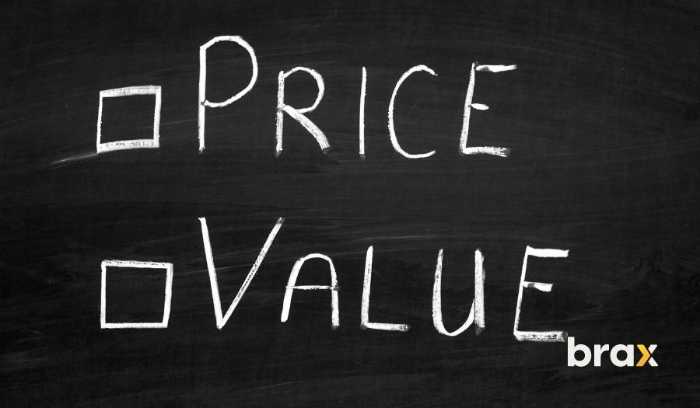
But fret not! In this article, we'll discuss all about what the Average Order Value is and how you can improve it for your eCommerce business.
If you want to quickly jump to specific parts of this article, click on any of the topics listed below:
What is Average Order Value?
What Affects the Average Order Value
Average Order Value for the eCommerce Industry
17 Techniques to Increase Average Order Value in eCommerce
Let's get started!
What is Average Order Value?
Most people are familiar with the concept of "average order value," or AOV.
Simply put, AOV is the average amount of money that a customer spends per order.
While it may seem like a relatively straightforward metric, AOV is actually quite important for businesses. After all, if your AOV is low, you'll need to sell a lot more products in order to make a good profit. Conversely, if your AOV is high, you can make a profit even if you sell fewer items. As such, it's important to understand how to calculate AOV and what factors can affect it.
There are a few different ways to calculate AOV. The most common method is simply to take the total sales for a period of time and divide it by the number of orders during that same timeframe.
However, this can be misleading, as it doesn't take into account the different values of each order. For example, if you have two orders totaling $100, but one order is for $50, and the other is for $150, your average order value would be $100 even though the actual value of each order is different.
A more accurate way to calculate AOV is to take the total revenue for a period of time and divide it by the number of unique items sold during that same timeframe. This gives you a better idea of the true average value of each order.
Another important factor to consider when calculating AOV is shipping costs. If you include shipping costs in your calculations, be sure to use the same method for all orders, whether they're being shipped domestically or internationally.
Once you have a good understanding of how to calculate AOV, you can start looking at ways to increase it. One obvious way to do this is by selling higher-priced items.
However, there are other ways to boost AOV as well. For example, you can offer bundle deals or discounts for customers who spend a certain amount of money on their orders. You can also encourage customers to add extra items to their carts before checking out.
By increasing your AOV, you can improve your bottom line and make your business more successful overall.
What Affects the Average Order Value?
There are many factors that can affect the average order value. Most businesses are interested in increasing their AOV, as it can have a direct impact on profits. Here are some of the main factors that can affect AOV:
1. The type of product or service being sold
Some products or services simply cost more than others. For example, luxury items will typically have a higher AOV than everyday items.
2. The pricing strategy
The way that prices are set can also affect AOV. If prices are set too low, customers may be more likely to purchase smaller quantities. On the other hand, if prices are set too high as compared to other stores in the same market, customers may be discouraged from making purchases altogether.
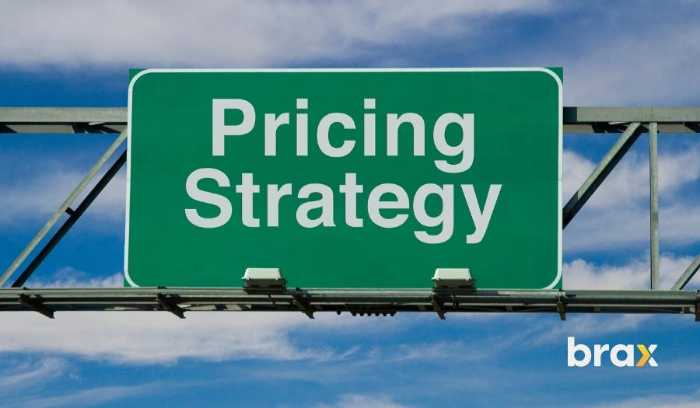
3. Discounts and promotions
Offering discounts or running promotions can also impact AOV. Customers may be more likely to purchase more items if they feel they are getting a good deal. However, if discounts are offered too frequently, it can erode profit margins.
4. The quality of the product or service
The quality of the product or service being sold can also affect AOV. In general, customers are willing to pay more for higher-quality items. However, this is not always the case, and businesses need to find the right balance between quality and price.
5. Perceive value of the product or service being offered
This can have a significant impact on how much customers are willing to spend. If customers believe that they are getting a good deal, they will be more likely to make a larger purchase.
6. The overall economic climate
When consumers feel confident about their financial situation, they are more likely to make larger purchases. Conversely, during periods of economic uncertainty, people may be more likely to tighten their spending.
There are many factors that go into calculating average order value, and it's important for eCommerce businesses to understand what affects it. By knowing what impacts AOV, businesses can work on strategies to increase it and improve their bottom line.
Average Order Value for the eCommerce Industry
It's no secret that eCommerce has been on the rise in recent years. With the pandemic accelerating this trend, it's fair to say that eCommerce is here to stay. But what does this mean for businesses?
Well, one key area to focus on is average order value (AOV). It's a valuable metric for businesses to track as it can give insights into customer spending habits and how effective your marketing and sales strategies are.
Globally, the AOV for eCommerce has been $115 the past year, with Luxury & Jewelry dominating, followed by Consumer Goods and Multi-Brand Retail.

There are a few things to keep in mind when it comes to AOV. First, it's important to remember that AOV will vary by industry. So, while the average AOV for all industries was $80 in 2020, this number will be higher or lower depending on the specific industry you're in.
Second, AOV can be impacted by a number of factors such as seasonality, discounts, and shipping costs. As such, it's important to track AOV over time so you can identify any trends or changes.
Finally, it's worth noting that the pandemic has had an impact on AOV. According to a recent study, the average order value for eCommerce stores increased by 9% in 2020. This is a significant increase from previous years, and it's likely due to the pandemic.
With more people shopping online, businesses are able to reach a wider audience and generate more sales. Additionally, with so many people working from home, there's been a surge in demand for home goods and office supplies. As a result, we're seeing higher AOVs for businesses that sell these types of products.
Looking at all of this, it's clear that AOV is an important metric for businesses to track. By understanding how AOV varies by industry and how it's impacted by factors like seasonality and the pandemic, businesses can make better decisions about their marketing and sales strategies.
17 Techniques to Increase Average Order Value in eCommerce
No matter what business you're in, increasing your average order value is always a good idea. After all, it's easier to get one customer to spend $100 than it is to get 10 customers to spend $10 each. But how can you actually increase the average order value of your eCommerce business?
eCommerce is a thriving industry, and competition is fierce. In order to stay ahead, online retailers need to find ways to increase their Average Order Value. There are a number of techniques that can be used to increase AOV, and we'll explore some of the most effective ones.
From offering discounts and free shipping to upselling and cross-selling, there are a number of strategies that can be used to boost AOV. So if you're looking for ways to increase your eCommerce sales, read on for some valuable tips.
1. Using the Urgency Principle
The Urgency Principle is a well-established idea in marketing and sales. The basic premise is that people are more likely to buy something if they feel that it's time-sensitive. This principle has been used successfully in brick-and-mortar businesses for years, and it can also be harnessed to increase AOV in eCommerce.
There are a few different ways to create a sense of urgency on an eCommerce website. One is to offer time-limited discounts or promotions. This could be a daily deal, a limited-time sale, or even a countdown timer for an upcoming event.

Another way to create urgency is to highlight that popular items are running low in stock. This encourages customers to buy sooner rather than later, before the item runs out entirely.
Finally, shipping times can also be used to create a sense of urgency. For example, if customers know that they only have X days to receive their order before it ships, they may be more likely to buy now rather than wait.
The Urgency Principle is a powerful tool that eCommerce businesses can use to increase AOV. By creating a sense of urgency, businesses can encourage customers to buy more items, buy sooner, and take advantage of limited-time offers.
When used correctly, the Urgency Principle can be a powerful way to boost sales and grow an eCommerce business.
To understand more about this marketing strategy and how to apply it to other parts of your business, read our discussion on The Urgency Principle (This post will be removed in 24 hours!).
2. Using People's Fear of Missing Out
If you've ever experienced the disappointment of missing out on a great sale or a SOLD OUT sign on your favorite item, then you know the power of the Fear of Missing Out or FOMO. The Fear Of Missing Out is a psychological phenomenon that refers to the feeling of anxiety or disappointment that comes from thinking you are missing out on a social event or opportunity. This phenomenon can be harnessed to increase Average Order Value (AOV) in eCommerce.
Here's how it works: when customers feel like they may miss out on a good deal, they're more likely to add items to their cart and purchase them immediately. This sense of urgency can be created in several ways, such as by showing a high number of reviews or by displaying low stock levels on popular items.
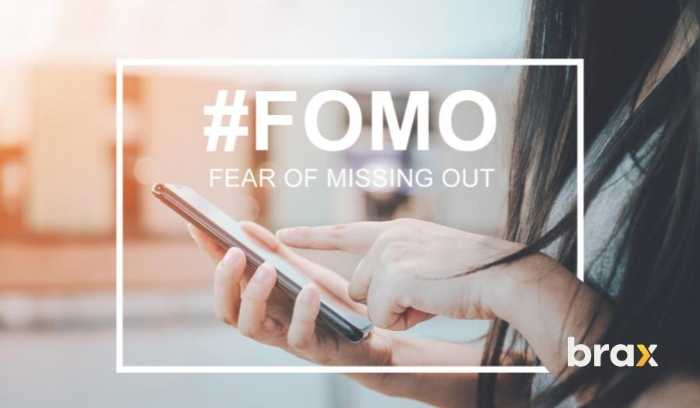
When it comes to eCommerce, FOMO can be used to encourage customers to add more items to their cart, leading to a higher average order value. There are a few different ways to leverage FOMO in your eCommerce business.
You can also use social proof by featuring customer testimonials or reviews. This will show customers that others are enjoying your products and inspire them to add items to their cart.
Marketers nowadays use TikTok to increase their target audience's FOMO. They show videos of people enjoying using their products and how it makes their life easier or more fun. This will make your target audience want to use your product so that they don't miss out on the experience.
By using FOMO to increase AOV, retailers can encourage customers to buy more items at once, boosting their bottom line. And since this technique tap into consumers' natural desire to get the best deal possible, it's a win-win for both shoppers and businesses alike.
3. Using the Familiarity Principle
Customers are more likely to purchase an item when they're familiar with it. This principle, known as the "familiarity principle," has been extensively studied by psychologists and marketers alike. And there's a good reason for it: the familiarity principle works.
In one well-known experiment, people were shown a series of unfamiliar faces and then asked to rate their attractiveness. The people who rated the faces as most attractive were the ones who had seen the faces before.
The familiarity principle also applies to products. Customers are more likely to purchase an item when they're familiar with it. This is why many eCommerce businesses use product recommendation engines.
By showing customers products that are similar to ones they've viewed or purchased in the past, businesses can increase the likelihood that those customers will add those items to their cart.

The familiarity principle doesn't just apply to individual products; it can also be used to increase average order value. When customers are presented with a collection of items that are all familiar to them, they're more likely to add multiple items to their cart. This is why eCommerce businesses should consider curating collections of products that complement each other.
For example, a business selling kitchen appliances could create a collection that includes a blender, a juicer, and a mixer. Customers who are familiar with all three items are more likely than those who are only familiar with one or two of them to add all three items to their cart.
By using the familiarity principle, eCommerce businesses can increase both conversion rates and average order value. By showing customers products that they're familiar with, businesses can increase the likelihood that those customers will make a purchase.
And by curating collections of related products, businesses can encourage customers to add multiple items to their carts. The familiarity principle is a powerful tool that every eCommerce business should be using.
4. Adding Trust Badges
When it comes to online shopping, one of the most important factors that can influence a customer's decision is trust. If a shopper doesn't feel confident that their personal information will be safe or that they'll receive the product they ordered, they're less likely to complete a purchase.
This is where trust badges can come in handy. Trust badges are small symbols or logos that indicate that an eCommerce site is trustworthy and secure. They can give customers the peace of mind they need to confidently complete a purchase, and they can also help increase average order value.
There are a few different ways to use trust badges to increase average order value. One is to showcase them prominently on the pages where customers input their personal and payment information. This helps to reassure shoppers that their data is safe and protected.
Another option is to display secure payment and secure website badges on the home page and product pages. This provides an incentive for shoppers to choose your site over others, and it can also help increase the average order value.
Whatever approach you take, incorporating trust badges into your eCommerce site can be a great way to boost sales and build customer confidence.
5. Offer to Buy More to Get Discount
When it comes to online shopping, one of the most effective ways to increase your average order value is to offer discounts for buying more. This strategy encourages customers to add more items to their cart, which can lead to a significant increase in your overall sales.
There are a few different ways to implement this strategy, but one of the most effective is to offer tiered discounts. For example, you could offer a 10% discount for orders over $100, a 20% discount for orders over $250, and so on. This not only provides an incentive for customers to spend more, but it also helps to increase your average order value.
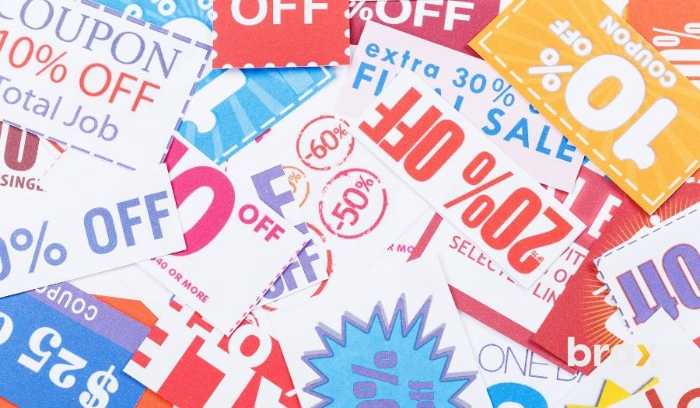
You can also offer discounts on specific items when customers purchase more than one. For example, you could offer a buy one, get one 50% off deal on all clothing items. Or, you could offer a 10% discount on all furniture items when customers purchase two or more. These types of deals are great for encouraging customers to spend more, and they can really help boost your average order value.
So, if you’re looking for ways to increase your average order value, consider offering discounts for buying more. This is a simple yet effective strategy that can really help boost your sales.
6. Offer Conditional Promotional Codes
First, let's start with the basics: what is a conditional promotional code? A conditional promotional code is a code that is only valid if certain conditions are met. For example, you might offer a 10% discount if the customer includes a specific product in their cart. Or you might offer free shipping if the customer buys more than one item.
There are two main benefits of using conditional promotional codes. First, it encourages customers to spend more in order to take advantage of the discount.
Second, it helps you target specific products or product categories that you want to promote. For example, if you've got a new line of products that you're trying to launch, you could offer a conditional promotional code for those products.
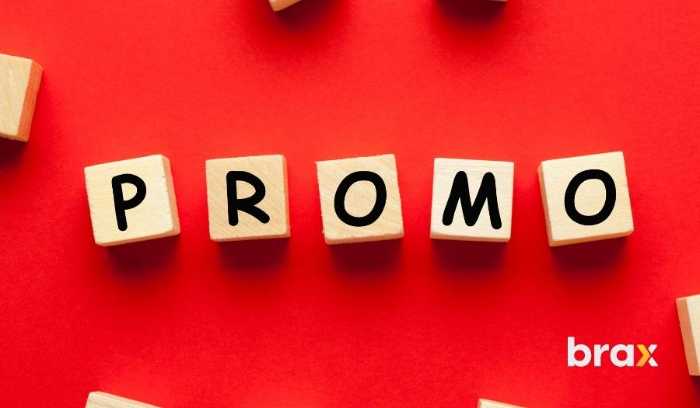
Now that we've covered the basics, let's talk about how to go about offering conditional promotional codes. The first step is to decide what conditions you want to attach to the code. As we mentioned before, common conditions include spending a certain amount of money or buying a certain number of items. Once you've decided on the conditions, the next step is to choose a promotion code provider. There are many different providers out there, but some of the most popular include Shopify, WooCommerce, and Magento.
Finally, once you've chosen a provider and set up your account, you'll need to generate your codes and start promoting them. There are a few different ways to promote your codes, but one of the most effective is through email marketing. You can create an email campaign and include your codes in the emails that you send out. You can also promote your codes on social media or through paid advertising.
Offering conditional promotional codes is a great way to increase your average order value. By offering discounts for meeting certain conditions, you can encourage customers to spend more money at your store. And by choosing a code provider and promoting your codes through email marketing or other channels, you can reach a wide audience and maximize your chances of success.
7. Providing Wholesale or Bulk Prices
Retailers have long used bulk discounts as a way to increase average order value and move inventory. The strategy is simple: offer a lower price per unit when customers purchase more units of a product. This type of discount is often used with perishable goods, like food and flowers, as well as non-perishable items that are less likely to be resold, like event tickets and hotel rooms.
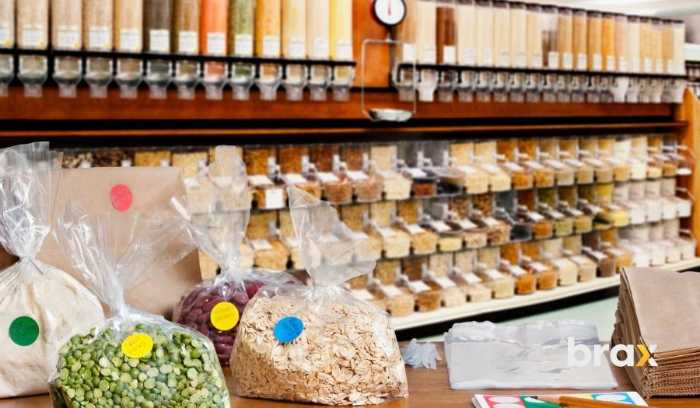
While the concept of bulk discounts is straightforward, there are a few things to keep in mind when implementing this strategy. First, it's important to set the right thresholds — too high and you won't move any inventory; too low and you'll leave money on the table.
Second, make sure your prices are still competitive even when offering a discount. And finally, don't forget to promote your bulk discounts — consumers need to know that they exist in order to take advantage of them!
When done correctly, bulk discounts can be an effective way to increase average order value and move inventory. Just be sure to set the right thresholds, keep prices competitive, and promote your discounts!
8. Bundle Promos
A bundle promotion is simply an offer to sell two or more products or services together at a discounted price. For example, a cell phone company might offer a bundle that includes a new phone, unlimited data, and free shipping for a lower price than if the customer were to purchase each item separately. Businesses often use bundle promotions to clear out old inventory or to promote new products.
There are a few things to keep in mind if you're considering using bundle promotions as part of your marketing strategy. First, make sure that the products you're bundling complement each other and that there's a logical reason for buying them together.
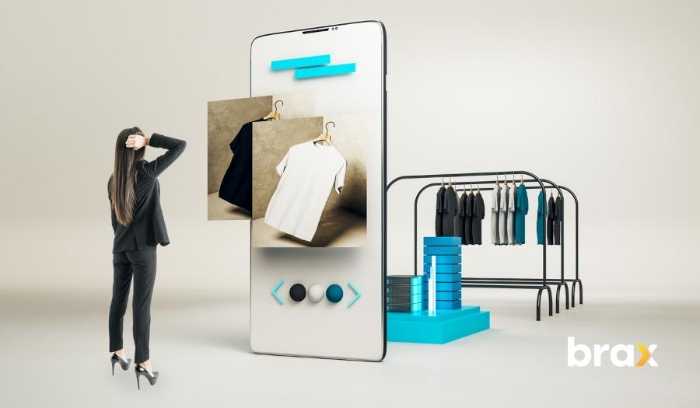
Second, be clear about what's included in the bundle and what the discount is. Customers should be able to easily see how much they're saving by purchasing the bundle.
Third, consider the needs of your target customer. What are they looking for? What would they be willing to pay for?
And finally, don't forget to include an expiration date on the offer. Nothing kills motivation quite like the knowledge that there's no rush to take advantage of a deal.
Bundle promotions can be an effective way to boost sales and build customer loyalty. Keep these tips in mind when creating your own bundle promotion, and you'll be on your way to success.
9. Free Shipping with Minimum
Offering free shipping with a minimum purchase is a great way to encourage customers to spend more money on your site. It's an especially good idea if you have high shipping costs or if you sell items that are heavy or bulky.
This is a common technique that many online retailers use, and it can be very effective in increasing your average order value. Customers are often willing to add an extra item or two to their cart if it means they’ll get free shipping, so this is definitely something worth considering. Plus, it's a great way to build customer loyalty.
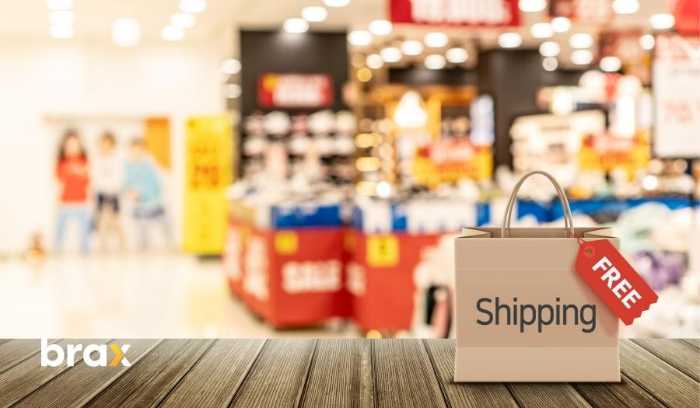
Customers who receive free shipping are more likely to come back and make future purchases. However, there are a few things to keep in mind when offering free shipping.
First, make sure you set a minimum purchase amount that makes sense for your business. You don't want to lose money on shipping by setting the minimum too low.
Second, consider how you will ship the items. Will you use a third-party shipping service or will you handle it yourself? If you use a third-party service, be sure to factor in the cost of shipping when setting the minimum purchase amount.
Third, make sure your customers know about the free shipping offer. Include information about it on your website and in your marketing materials. Let them know that they can save money by spending more on your site.
Finally, make sure you display the difference between the contents of their cart and how much more they need to add to get free shipping. Make it easier for them so that they won't have to calculate and recalculate over and over.
For example, if the minimum to get free shipping if $50 and the customer's cart already contains $37, make sure you indicate that they can get free shipping if they add items worth at least $13 to their cart.
Offering free shipping with a minimum purchase will encourage customers to add more items to their cart in order to qualify for the free shipping or other incentives.
10. Create VIP or Loyalty Program
Did you know that the average order value for VIP or loyalty program members is 12% to 18% higher than for non-members? If you're not already up to your eyeballs in VIP or loyalty programs, now might be a good time to start considering them. After all, who doesn't love feeling like a VIP?
There are a few things to keep in mind when creating a VIP or loyalty program. First, what are your goals? Do you want to increase the average order value? Drive repeat purchases? Or both?
Once you know your goals, you can start thinking about what type of program will best fit your needs. There are many different types of programs out there, so it's important to do your research and find one that fits both your goals and your brand. (add link to list of vip programs)
Once you've got your program up and running, it's important to keep an eye on it and make sure it's still achieving your desired results. Remember, VIP and loyalty programs are always evolving, so don't be afraid to make changes as needed. After all, the only thing worse than not having a VIP or loyalty program is having one that isn't working properly!
11. Include Add-Ons and Upsells upon Checkout
No matter what business you're in, it's always a good idea to upsell and create add-ons. By definition, an upsell is when you offer a customer a more expensive version of the product they're interested in.
For example, let's say someone is buying a pair of jeans from your store. You could upsell them by offering them a more premium pair of jeans with a better fit or fabric.
On the other hand, an add-on is an additional product that complements the one they're interested in. Usually, the add-on will not work or will not be useful without the first product being purchased. For instance, a replacement ink cartridge for a specific printer model (provided that the customer adds the exact printer model).
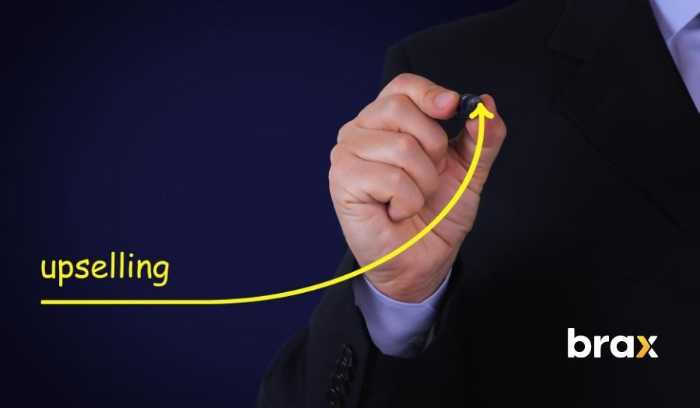
Creating effective upsells and add-ons can be tricky, but there are a few general guidelines you can follow to increase your chances of success.
First, make sure that the upsell or add-on is actually an upgrade or improvement over the original product.
Second, keep the price difference between the original product and the upsell/add-on reasonable; too much of a price jump will turn customers away.
Finally, don't be too forceful in your sales pitch; give customers the information they need to make an informed decision, but ultimately let them choose whether or not to take advantage of your upsell/add-on offer.
By following these simple tips, you can start increasing your average order value and generating more revenue for your business.
12. Cross Sell
In eCommerce, cross-selling is the practice of offering related products to a customer who is in the process of making a purchase. It's what you typically see in products marketed as "you might also be interested in."
As opposed to items for Add-Ons and Upselling, products you recommend for cross-selling can function independently from the initial product added.
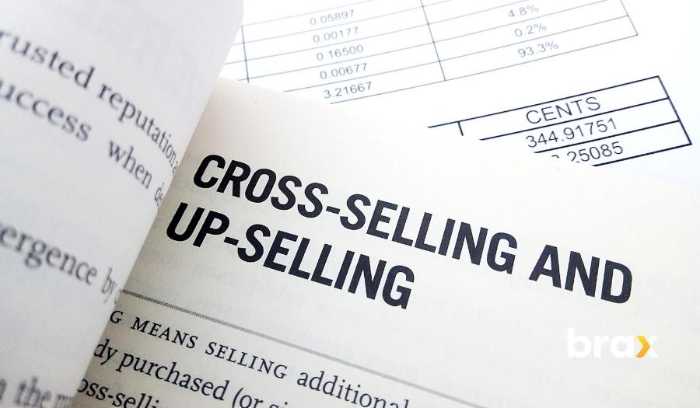
There are a few different ways to approach cross-selling in eCommerce. One is to display related products on the product page itself. This way, customers can easily see what other items are available and make an informed decision about whether to add them to their order.
Another approach is to use email marketing to promote related products after a purchase has been made. This can be done by sending follow-up emails with suggestions for complementary items or by providing discounts on future orders if certain products are purchased together.
Whichever approach you take, cross-selling can be an effective way to boost your average order value and grow your business. Just be sure not to overdo it — if you bombard customers with too many options, they may feel overwhelmed and end up leaving without making a purchase.
As such, if you want to cross-sell products, I recommend avoiding upselling. This way, your customer will not feel that you are pushing products to them too much.
Instead, focus on presenting a few high-quality recommendations that will enhance the customer’s experience and add real value to their purchase.
13. Use Exit-Intent Popups
Online shoppers are notoriously fickle. It only takes a single misclick or an error message to send them fleeing to a competitor's site. This is why eCommerce businesses must take every opportunity to keep shoppers engaged. One effective way to do this is by using exit-intent pop-ups.
These pop-ups appear when a shopper moves their mouse cursor towards the browser's back button, providing a last-ditch chance to offer a discount or free shipping. By timing the popup to appear at just the right moment, businesses can increase the likelihood that shoppers will complete their purchase.
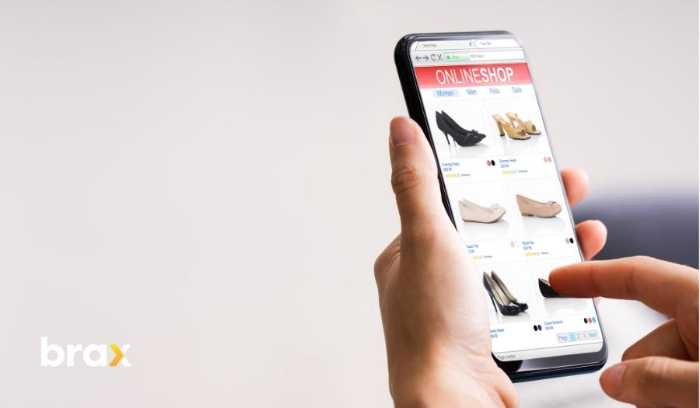
And since these pop-ups can be highly targeted, they can also be used to boost average order value by upselling complementary products. This is also where you can provide them with additional offers so they can continue browsing your shop.
In today's competitive eCommerce landscape, businesses must use every tool at their disposal to convert browsers into buyers. Exit-intent popups are one of the most effective tools available, and they should be part of every eCommerce company's conversion strategy.
14. Provide a Free Gift Card
Gift cards are a great way to increase the average order value of your eCommerce store. By offering a discount on future purchases, you can encourage customers to spend more money with you today. And since most people don't use the full value of their gift card right away, you'll also get the benefit of having that money tied up in your business for a while. All in all, it's a win-win!
There are a few things to keep in mind when using gift cards to increase average order value, though. First, make sure that you're clear about the discount being offered. Customers should know exactly how much they're saving by spending more with you today.
Second, be sure to set an expiration date for the gift card so that customers feel compelled to use it sooner rather than later.
Finally, consider offering a higher discount for larger orders; this will further incentivize customers to spend more with you now.
By following these tips, you can use gift cards to increase average order value and boost your bottom line.
15. Hold a Contest or Raffle with a Threshold/Minimum
Want to boost sales on your eCommerce site? Why not hold a contest or raffle with a minimum threshold? For example, if the minimum order is $50, then every customer who spends at least that amount will be entered into a contest to win a valuable prize.
A well-run contest or raffle can help to create a buzz around your brand, attract new customers, and get existing customers to buy more.

But how do you run a successful contest or raffle? Here are a few tips:
1. Decide what type of contest or raffle you want to run.
Should the customer buy a specific product in order to be eligible for the prize? Or would a minimum total order be enough? There are pros and cons to both, and it depends on what your priorities are — whether promoting a specific product or simply increasing the customer's cart value.
2. Come up with a compelling prize.
The prize should be something that your target customer would actually want to win. It should also be of high enough value that people are willing to put in the effort to enter the contest or raffle.
3. Add a minimum amount for the customer to be allowed to enter.
The goal is, after all, to increase your AOV. To do that, you should encourage them to buy more for them to be qualified. As is with previous techniques, find a way to display how much more the customer needs to add to his cart in order to be qualified.
4. Tell everyone about it!
Promote your contest or raffle through all of your channels, including social media, email, and your website. Make sure to include clear instructions on how to enter, as well as any deadlines or rules.
5. Choose a winner fairly and transparently.
If you're running a skill-based contest, make sure the judging is objective. If you're running sweepstakes, use a random number generator to select the winner. Once the winner is chosen, announce it publicly and send them their prize promptly.
This incentive can encourage customers to spend more money in order to have a chance at winning the prize. Furthermore, by advertising the contest or raffle prominently on the website, it can also attract new customers who may not have considered buying from the site before.
By following these steps, you can run a successful contest or raffle that will help boost sales on your eCommerce site.
16. Personalize the Shopping Experience
In a world where consumers have more choices than ever before, it's important for businesses to find ways to stand out from the crowd. One way to do this is by personalizing the shopping experience. By tailoring the experience to the individual shopper, businesses can create a sense of connection and loyalty that encourages customers to spend more.
By personalizing the shopping experience, you can make each customer feel like they are your only customer. This feeling of exclusivity will cause them to spend more money on your products.

There are a number of ways to personalize the shopping experience. Here are five ways to do this:
1. Use the customer's name throughout the shopping process.
From the moment they land on your website to the thank you page, make sure their name is visible. This will create a feeling of intimacy and make them feel special.
2. Offer a personalized discount code.
This could be based on their purchase history or something as simple as their birthday. By offering a discount, you are giving them a reason to buy from you again in the future.
3. Send abandoned cart emails.
If a customer puts items in their cart but doesn't complete the purchase, send them an email reminding them of what they left behind. This is a great way to nudge them towards making a purchase and increasing your AOV.
4. Make recommendations based on their past purchases or browsing history.
On your website or in your emails, recommend products that are similar to what they have purchased in the past. This shows that you are paying attention to their interests and makes it more likely that they will add those items to their cart. It also ensures that customers only see items that are relevant to them, which can save time and increase the likelihood of a purchase.
5. Customized customer service.
Another way to personalize the experience is to provide customer service that is tailored to the individual. This could include offering advice on product selection or providing personalized assistance with returns or exchanges. By making shoppers feel valued and cared for, businesses can increase loyalty and encourage higher spending.
Personalizing the shopping experience is an effective way to increase average order value. By recommending products that are relevant to the individual shopper and providing customer service that is tailored to their needs, businesses can create a sense of connection and loyalty that encourages customers to spend more. In today's competitive marketplace, this is an essential strategy for success.
17. Market to Higher-Tier Audiences
Marketing to higher-tier audiences can be a great way to increase average order value in eCommerce. The high-tier crowd is a group of people who have the disposable income to spend more on items that they want or need. While it may take more effort to reach these people, it will be worth it in the end when you see your average order value increase.
After all, if you can appeal to customers who are willing and able to spend more, it stands to reason that they'll do just that. But how exactly do you go about marketing to high-end customers? Below are a few tips:
1. Know your audience.
First and foremost, it's important to have a clear understanding of who your target high-end customer is. What are their demographics? What needs and wants do they have? What motivates them to make a purchase? Once you have a good grasp on these things, you can start developing targeted marketing messages that will resonate with them.
2. Position your products appropriately.
In order to successfully market your products to higher-tier audiences, you need to make sure that they're positioned appropriately. That means conveying the right mix of quality, value, and prestige.
If your products come across as being too cheap or low-quality, you'll never be able to sell them at a higher price point. On the other hand, if they're positioned as being too exclusive or unattainable, you'll have trouble getting them in front of your target audience in the first place.
3. Use the right channels.
Not all marketing channels are created equal. When marketing to higher-tier audiences, it's important to use channels that will reach them where they're already spending their time and money.
For example, luxury brands often use print advertising in high-end magazines as a way to reach their target market. Similarly, online retailers might use paid search ads targeting keywords that affluent shoppers are known to search for.
4. Focus on quality over quantity.
When it comes to marketing to higher-tier audiences, quality is far more important than quantity. It's better to spend your time and money reaching a smaller group of high-value prospects than trying to reach everyone with a generic message. By tailoring your message and offer specific to your target audience, you'll be more likely to convert them into paying customers.
These tips will help you successfully market your products or services to higher-tier audiences, increasing your average order value in the process. By knowing your audience, positioning your products correctly, using the right channels, and focusing on quality over quantity, you can give yourself a major advantage in the eCommerce space.
So, what have we learned?
We have learned a lot about how to increase Average Order Value in eCommerce. By improving the user experience, offering discounts and free shipping, and personalizing the shopping experience, retailers can encourage shoppers to spend more per transaction.
In addition, by partnering with other businesses and cross-selling complementary products, retailers can provide shoppers with additional reasons to spend more. By implementing these strategies, retailers can significantly increase their average order value, providing a boost to their bottom line.
Thanks for reading! By now, you should have a pretty good idea of how to increase the average order value for your e-commerce business. But if you're still not sure where to start, or you just want some extra help, Brax is here for you.
With our platform, you'll be able to create targeted campaigns that maximize conversions. So what are you waiting for? Book a demo today, and let us show you what we can do!

